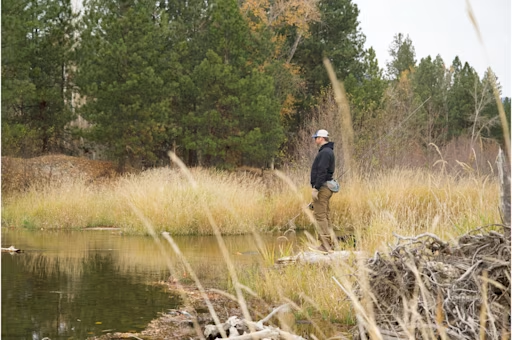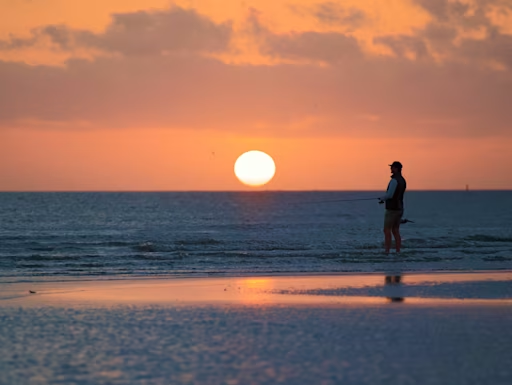Fly fishing for spring lake trout
Lake trout are usually a creature of the deep, far away from the pull of a fly. Spring provides a a short window where these lake monsters travel closer to the surface well within the reach of fly anglers. Learn how to target lakers on the fly this spring and the gear and fly choices needed to pull one of these massive trout out of a cold water lake and into your boat.
Share this article

Warm weather is upon us and the first fly hatches of the season are appearing. Skwallas, March browns, stoneflies and the occasional salmon fly are hovering over rivers all over and fly anglers are in tow. The draw of dry fly hatches is certainly strong, but in northern states and Canada, there is an even better fish fly anglers should be focusing on.
There are two times a year when lake trout are a viable target for the fly angler, spring thaw and fall spawn. Last week we wrote about general tips for targeting lake trout in the spring, but catching a laker on the fly has its own specifics.
Sink, sink, sink

Hooking up a lake trout with your fly rod is a real accomplishment, but it's a far cry from traditional fly fishing. The first adjustment that must be made is with your gear. Full sinking line is a must when targeting lakers. Yes, the fish rise much higher into the water column and sometimes inhabit the shallows, but if you don't catch them there, you need to be down 20 to 30 feet down.
You may get lucky with a sink tip line, or with an attachable sink tip, but there is no substitute for full sinking line. The name of the game is to get your line down fast and keep it down on your retrieve.
Leader and tippet
A 10 foot 15 to 20 pound leader works great to keep your line down and there is little need for a scaled down tippet as lakers don’t get too line shy. Braided leader is a plus as lakers may not have the teeth of a pike, or muskie, but can still bite through mono relatively easily. There is also the size of the fish to consider, as well, as some lake trout can easily get over 30 pounds. These fish aren’t the hardest fighters, this time of year, but their combination of weight, power and teeth are more than enough to handle weaker lines. A 15 to 20 pound fluorocarbon line is another great option here as its abrasion resistance will also hold up to teeth and rocks that a trout may wrap the line around.
Fly patterns

Lakers are such apex predators they seem to be willing to gulp down most baitfish patterns without much thought. Chartreuse Clouser minnows can catch most predatory fish and lake trout are no different. If you tie your own flies, try drawing in vertical stripes with a felt tipped pen to further imitate perch. Other patterns like zonkers, or egg sucking leeches also work great.
To aid in getting your fly low in the water column make sure your flies either have lead wraps, or substantial dumbbell eyes.
Your stripping speed on a fly should be based on the water temps. If the water is still under 50 degrees, try a slow and steady pattern as the fish’s metabolism may not be fully active yet. Once you get above 50, a fast strip, imitating a panicked baitfish works great to incite a strike.
Rod weight
Five weights are synonymous with trout, but they have no place tackling a lake trout. Your seven weight is a typical streamer rod, but even it will strain under the pressure of a fish over 15 pounds. The safest bet is a fast action eight weight. The eight weight has enough backbone to fight larger fish off the bottom of the lake. An added bonus with the eight weight is casting ability in the wind. In northern states and Canada, spring is notorious for wind. A fast action eight weight has the ability to punch a fly farther through a headwind, allowing you to cover more water in bad conditions.
Where to focus

River mouths in spring are a great target on any lake featuring them. The snow melt swollen rivers will move silt and sediment into the lake, making an off color patch of water. This sediment will be full of small insects, which will attract bait fish and in turn attract lakers that use the off color to ambush prey.
Islands are another great feature to target, especially those close to shore. The channels between shore and island will act as a natural funnel for fish to move through. You can also find underwater channels that will naturally funnel fish by using Navionics on the Fishbrian App. Using the depth maps will also help you find transitional areas like drop offs and shallows, and other safe havens for baitfish during spring.
Fly fishing is always pushing the boundaries of what can be caught with fur and feather. The sport takes us to beautiful locations and teaches us about new, exciting species that fly anglers before us never considered to catch. Don’t miss out on this window to expand your knowledge and hook a fish most other fly anglers have never even tried for. Spring is an exceptional time of year to fly fish and lake trout fishing is an exceptional way to beat the crowds on your local rivers and find that oh so important solitude we all desire.
Now let’s go fishing. We’ll bring the Clouser minnows.
If you haven't experienced the #1 fishing app worldwide, make sure and check out Fishbrain to see all the fish data, fishing spots, weather conditions you've been missing out on plus much more.

Download the Fishbrain app and access the best fishing spots in your area
Related blog posts
Your guide to Victoria’s best fish to catch in rivers, lakes, and coastal waters. Learn prime species, fishing tips, and key regulations

Learn how fish adapt as water temperatures cool from autumn to winter, including changes in behavior, metabolism, and habitat that help them survive.

From the beaches of Florida to the Great Lakes tributaries in Pennsylvania, learn how fish adapt to fall weather and how you can capitalize on that change.




